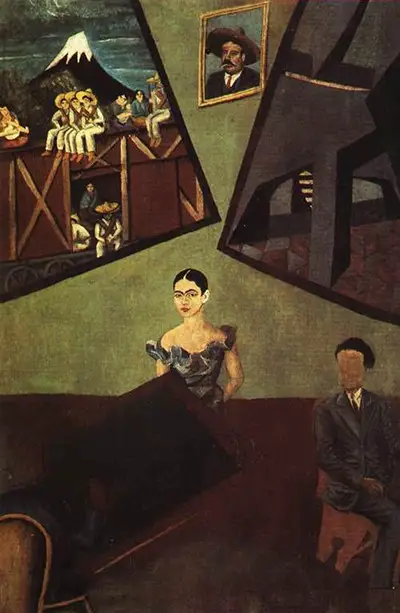It is a deliberate placing of strong heroes - those who fought for what they believed in. Frida Kahlo was a Mexican artist who painted a great number of self-portraits, and scenes of pain, passion, birth and death. She had a difficult life, which comes across in her work, but she appears to be still and strong when depicted in her own art.
La Adelita, Pancho Villa and Frida places the artist right in the centre of the work. The dark, diagonal lines of the paintings shown behind Frida point towards her, directing the eye of the viewer on the centre. Above Frida’s head is a portrait of Pancho Villa, a leader of the Mexican Revolution who fought for the poor. To her right-hand side is a large image of Mexican Zapatistas sitting with female supporters. A reference to Adelita further strengthens the message of the revolution. Adelita is a famous folk song about a woman who falls in love with the revolutionary Madero. She follows him and becomes involved in the fight herself.
Adelita has become a symbol of the female warrior in Mexico – the name is synonymous with women who stand up for their rights. On the other side of Frida is a painting that looks like a futuristic scene. A modern building showing strength and what is to come next. There is only one other figure in the painting, and that is of a suited male sitting to one side. The figure is faceless and is placed away from Frida. It suggests that this person is insignificant – present but instantly forgettable.
Kahlo became interested in politics early, soon after the bus crash that nearly killed her. She looked at her Mexican roots and became deeply involved her country’s past struggles. Many of her paintings have references to her home country within them. She shows that she cannot be separated from Mexico, they are forever part of the same thing. The original La Adelita, Pancho Villa and Frida painting, measuring 65cm by 45cm, is currently at the Tlaxcalteca Institute of Culture in Mexico.


